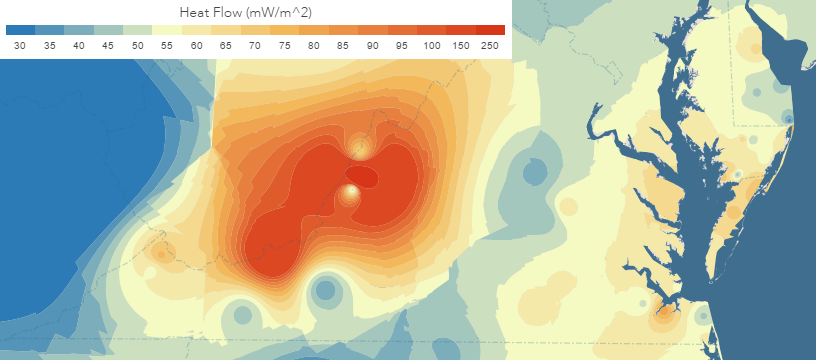
in Virginia, geothermal heat flow reaching the surface (measured in milliwatts/square meter) is highest near Bath County
Source: Department of Energy, Geothermal Heat Flow and Existing Plants

in Virginia, geothermal heat flow reaching the surface (measured in milliwatts/square meter) is highest near Bath County
Source: Department of Energy, Geothermal Heat Flow and Existing Plants
Virginia has 20 thermal springs, ranging in temperature from 60-106°F. The water in Virginia's thermal springs is rainwater which is heated by the geothermal gradient as it travels underground before resurfacing.1
The state's greatest geothermal asset is the stable-temperature bedrock, which averages around 55°F near the surface. In the winter, that temperature is warm. In the summer, 55°F is cool.
Virginia lacks the geothermal potential for generating electricity as California does at The Geysers, but there is great potential for heating/cooling buildings with ground-source heat pumps.
Geothermal energy is a renewable resource that could reduce the use of fossil fuels that produce greenhouse gas emissions. Ground source heat exchangers use standard heat pump technology, but rely upon fluid moving through pipes in the ground rather than exchange heat with the air. In contrast to air-based heat exchangers, the fluid is always 55°F.
Deep wells into drill into hard, impermeable rocks can be connected through horizontal drilling. Since water can be pumped underground, existing groundwater is no longer required. In northern Nevada, in a location without geysers and hot springs, the Project Red site can generate 3.5 megawatts of electricity from wells drilled 7,700 feet deep. The US Department of Energy calculated that 65 million homes could be powered eventually by 90 gigawatts of geothermal electricity. In 2022, geothermal power plants generated less than four gigawatts.
In 2024, when asked about the possibility of using geothermal energy to meet the increasing electricity demands of data centers, Dominion Energy ranked geothermal as dead last among options that included hydrogen and longer-duration storage. The company was pursuing small modular reactors instead. A spokesperson for Dominion Energy did say:2
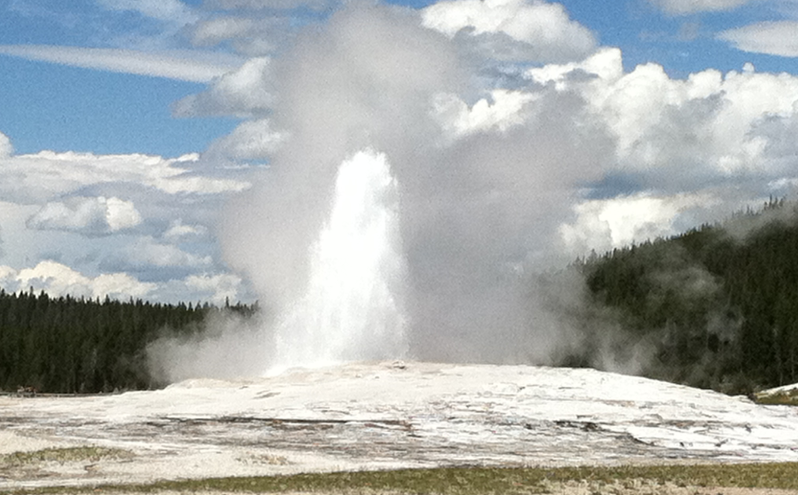
geysers such as Old Faithful in Yellowstone National Park are generated by water heated at depth, reaching the boiling point, and then surging to the surface
Temperature increases at depth. The geothermal gradient averages 25–30°C/km, or 15°F/1,000 feet in depth. Geothermal wells can be drilled deeper in order to access warmer rocks below the surface.3
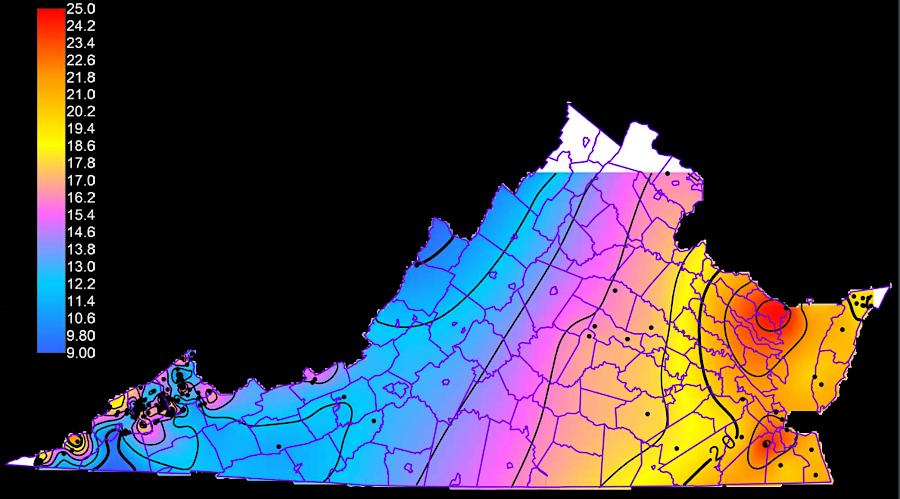
temperature at depth, 200m below ground surface
Source: Virginia Department of Energy, Geothermal Resources for the Eastern United States (2013)

heat flow, the ability of bedrock to conduct heat, is greatest near Bath Countye
Source: Virginia Department of Energy, Geothermal Resources for the Eastern United States (2013)
Radioactive elements in granitic plutons generate heat more than other bedrock, and plutons buried deep below the Coastal Plain sediments may offer geothermal potential for deep wells. The US Department of Energy has provided over $7 million to West Virginia University, so it can drill 15,000 feet deep in 2023 to assess if deep wells in the eastern United States could provide a reliable supply of geothermal energy near Morgantown.4
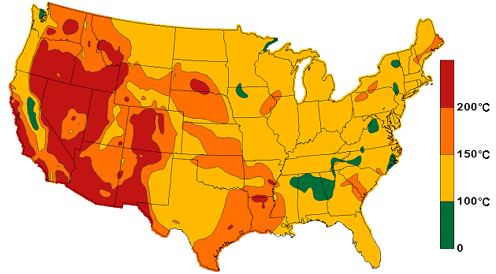
geothermal energy potential in the United States
Source: US Energy Information Administration, Geothermal Explained: Where Geothermal Energy Is Found
The US Department of Energy launched the Enhanced Geothermal Shot in 2022, seeking to lower costs for enhanced geothermal systems by 90% by 2035.5
Traditionally, geothermal systems are designed with heat exchangers to transfer underground heat (or coolness) to enclosed spaces in buildings on the surface. An additional possibility is to use fracking technology to pump water/fluids underground when solar/wind systems generate excess electricity, then extract the fluids when there demand for electricity increases at a different time of day.
If the underground reservoir is pressurized by the pumping, then the fluid could be released as needed to create an artesian flow at the surface strong enough to power a generator producing electricity. Such a geothermal system could serve as a battery, as well as a source of heat. Virginia lacks above-average temperatures underground, but may have geologic formations suitable for creating a geothermal battery system.6
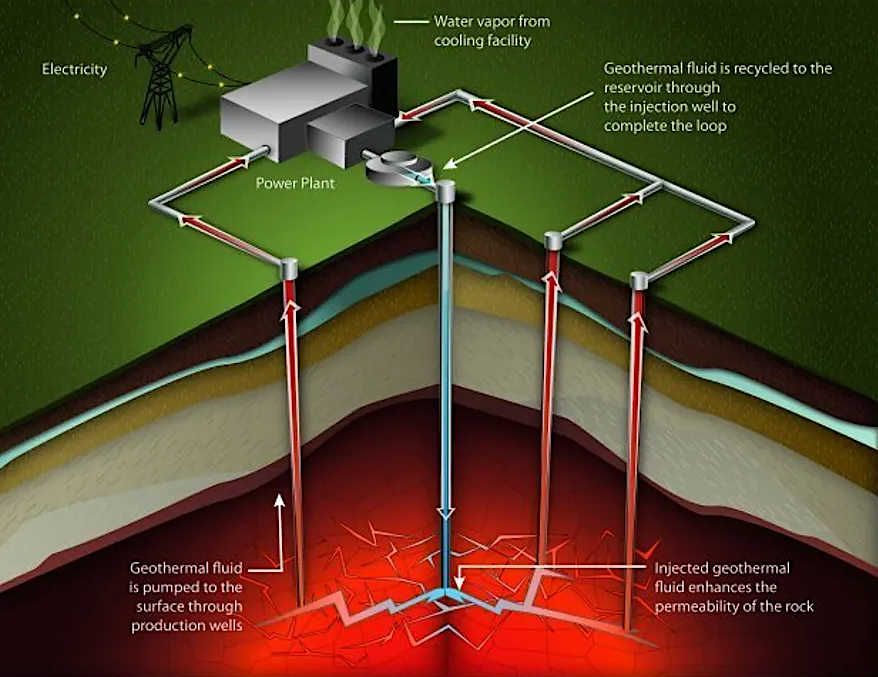
a geothermal "battery" would store fluids in pressurized geologic formations, then extract the fluids to power a generator
Source: US Department of Energy, Geothermal Energy: A Glance Back and a Leap Forward
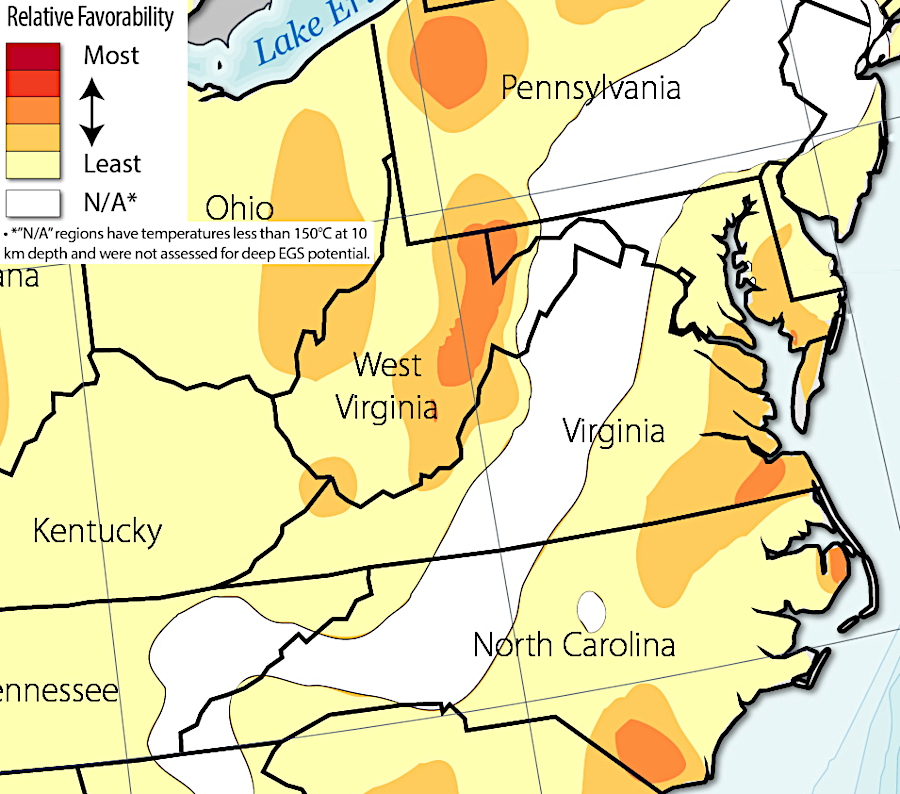
the lowest potential for geothermal energy in Virginia is underneath the Blue Ridge
Source: National Renewable Energy Laboratory, US Department of Energy, Resource Assessment and Mapping
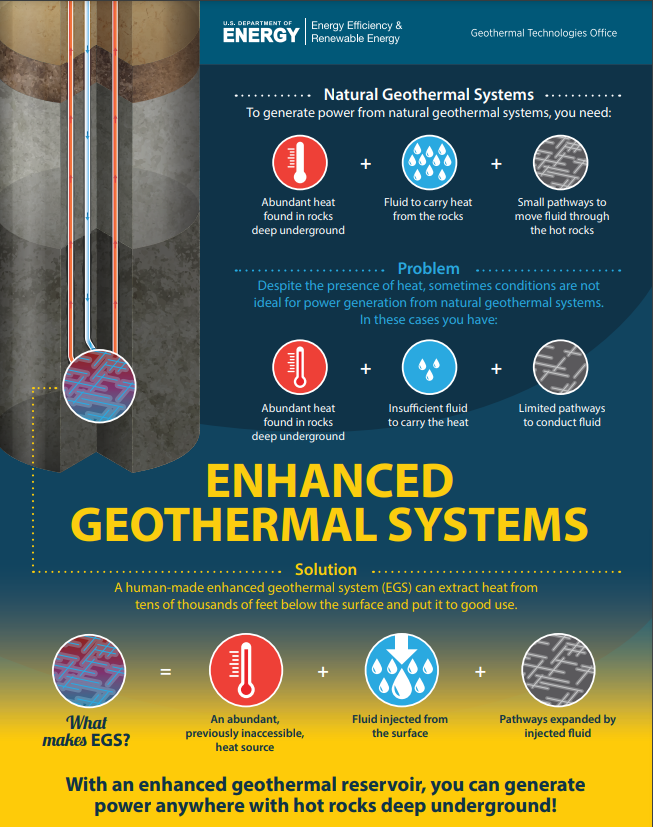
the US Department of Energy launched an "Earthshot" in 2022 to cut the costs of geothermal energy
Source: US Department of Energy, Enhanced Geothermal Shot infographic